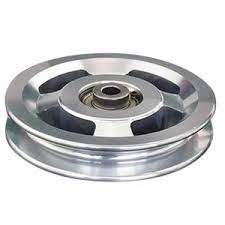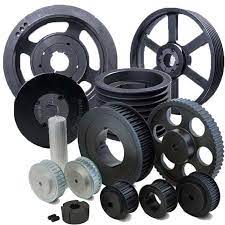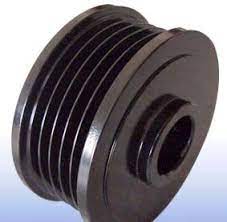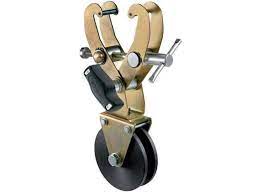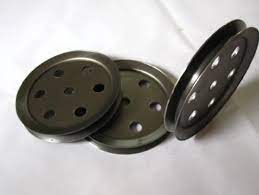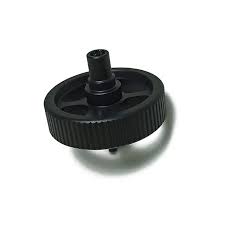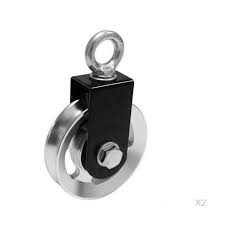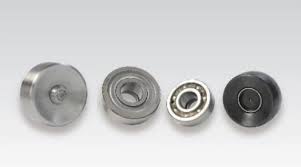Product Description
Agricultural Synchronous Aluminum Timing Spinning Taper Lock Bush Idler Flat Poly Grooved Sheave Wheel Adjustable Crankshaft Alternator Tension V Belt Pulley
Product Description
Pulleys belonging to wheel hub components are generally large in size, and their manufacturing processes are mainly casting and forging. Generally, the design with large size is cast iron (good casting performance), and cast steel is rarely used (poor casting performance); Generally, the smaller size can be designed as forgings and the material is steel. Belt pulley is mainly used for long-distance power transmission, such as the output of small diesel engines, agricultural vehicles, tractors, automobiles, mining machinery, mechanical processing equipment, textile machinery, packaging machinery, lathes, forging machines, power transmission of some small horsepower motorcycles, power transmission of agricultural machinery, air compressors, reducers, reducers, generators, cotton ginners, etc.
V-Belt Pulley:
The specifications of V-belts are divided by the dimensions of back width (top width) and height (thickness). According to different dimensions of back width (top width) and height (thickness), V-belts of different standards have different models. The pitch width, top width and height of V-belts of each model are different, so the pulley must also make various groove types according to the shape of V-belts; These different groove types determine various types of pulley.
| American Standard | |
AK/AKH BK/BKH TA/TB/TC Series Sheaves |
B/C/D Series Sheaves |
Poly-V Sheaves |
Variable Speed Sheaves |
| 3V/5V/8V sheaves | Bushings Split Taper Bushings/QD Bushings/TB Bushings |
European standard (SPA CHINAMFG SPC SPZ) |
|
Belt Pulleys for Taper Bushings |
V belt pulley with CHINAMFG hub |
Adjustable Speed V Belt Pulleys |
Flat Belt Pulleys For Taper Bushes |
Timing pulley:
The synchronous pulley drive is composed of a closed annular belt with equidistant teeth on the inner surface and corresponding pulley. When moving, the belt teeth mesh with the grooves of the belt pulley to transmit motion and power. It is a kind of meshing transmission, which has various characteristics of gear transmission, chain transmission and belt transmission. Widely used in automobile, textile, printing and packaging equipment, sewing equipment, office equipment, laser carving equipment, tobacco, financial machinery, stage lighting, communication and food machinery, medical machinery, steel machinery, petrochemical industry, instruments and meters, various precision machine tools and other fields
Spinning pulley:
Spinning is to fix the flat or hollow blank on the mold of the spinning machine. When the blank rotates with the main shaft of the machine, the blank is pressurized with a roller or driving rod to produce local plastic deformation. Spinning is a special forming method.
Agricultural pulley:
Agricultural pulley refers to the parts that can be used to repair and replace your agricultural machinery pulley, such as lawn mower and rotary tiller. Our agricultural pulley can perfectly replace various brands, including john deere
Custom pulley:
Bore type: pilot bore, finished bore, taper bore, bore for QD bushing.
Surface finish: Black oxide, phosphate, painted, Zinc plate, or passivated.
Material: 5C, cast iron, ductile iron, GG25, GGG40, nylon, aluminum, etc.
Inspection: Dynamic balance & Static balance tests are available with standardized design and well-equipped CNC Machining Systems.
Made according to drawings or samples, OEM inquiries are welcomed.
Related products
Company Profile
Production process
Certificates
/* January 22, 2571 19:08:37 */!function(){function s(e,r){var a,o={};try{e&&e.split(“,”).forEach(function(e,t){e&&(a=e.match(/(.*?):(.*)$/))&&1
| Certification: | CE, ISO |
|---|---|
| Pulley Sizes: | Type F |
| Manufacturing Process: | Forging |
| Material: | Carbon Steel |
| Surface Treatment: | Baking Paint |
| Application: | Chemical Industry, Grain Transport, Mining Transport, Power Plant |
| Samples: |
US$ 80/Piece
1 Piece(Min.Order) | |
|---|
| Customization: |
Available
| Customized Request |
|---|
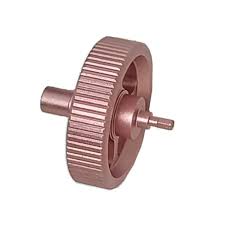
What role do spinning pulleys play in power transmission and conveyor systems?
Spinning pulleys play a crucial role in both power transmission and conveyor systems. Let’s examine their specific functions in each:
Power Transmission Systems:
In power transmission systems, spinning pulleys facilitate the transfer of mechanical power from a power source to driven components. Here’s how they contribute to the power transmission process:
– Energy Transfer: Spinning pulleys, combined with belts, ropes, or cables, enable the transfer of rotational energy from the power source, such as an electric motor or engine, to various driven components. They efficiently transmit power over distances and around obstacles.
– Speed and Torque Adjustment: By utilizing spinning pulleys of different sizes or diameters, power transmission systems can adjust the rotational speed and torque output. This allows for matching the speed and torque requirements of different components, ensuring efficient operation and preventing damage due to excessive speed or insufficient torque.
– Load Distribution: Spinning pulleys help distribute the load across the power transmission system. By using multiple pulleys and transmission elements, the load is shared among them, reducing the strain on individual components and increasing overall system durability and reliability.
– Belt Tension and Grip: Spinning pulleys maintain proper tension and grip on belts, ropes, or cables. They ensure that the power transmission elements remain securely in place, minimizing slippage and optimizing power transfer. Adequate tension and grip also contribute to the longevity of the components.
Conveyor Systems:
In conveyor systems, spinning pulleys are essential components that enable the movement of materials along a conveyor belt or other conveying medium. Here’s how they contribute to conveyor system operation:
– Belt Tension and Tracking: Spinning pulleys help maintain proper tension in the conveyor belt, ensuring it remains taut and properly aligned. This prevents belt sagging, reduces the risk of material spillage, and improves overall conveyor performance.
– Belt Speed Control: By adjusting the rotation speed of the spinning pulleys, conveyor systems can control the speed at which materials are transported. This allows for precise material handling, accommodating different production rates and optimizing operational efficiency.
– Directional Change: Spinning pulleys are used in conveyor systems to change the direction of the conveyor belt. By incorporating pulleys with different orientations, the conveyor belt can navigate curves, corners, inclines, or declines, adapting to the layout and requirements of the material handling process.
– Material Sorting and Diversion: Conveyor systems often utilize spinning pulleys with specialized features, such as sorting or diverting mechanisms. These pulleys enable the controlled separation or diversion of materials to different conveyor lines, chutes, or processing stations, enhancing automation and streamlining material flow.
– Load Capacity: Spinning pulleys in conveyor systems are designed to handle specific load capacities. Proper pulley selection ensures that the system can support the weight and characteristics of the conveyed materials without compromising performance or causing premature wear.
Overall, spinning pulleys are indispensable components in power transmission and conveyor systems. They enable efficient energy transfer, speed and torque adjustment, load distribution, belt tension, and grip control in power transmission systems. In conveyor systems, spinning pulleys facilitate belt tensioning, speed control, directional change, material sorting, and handling a range of load capacities. Their reliable operation ensures smooth and effective functioning of these systems in various industries and applications.
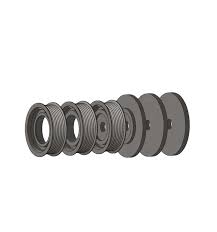
How do spinning pulleys contribute to the functioning of textile and printing machinery?
Spinning pulleys play a significant role in the functioning of textile and printing machinery, enabling various processes and operations. Here’s how spinning pulleys contribute to the functioning of these machines:
1. Tension Control:
In textile and printing machinery, spinning pulleys are used to control the tension of the materials being processed. Pulleys with adjustable positions or different sizes allow operators to regulate the tension of fabrics, threads, or printing substrates. Proper tension control ensures smooth and consistent material feed, preventing issues such as wrinkles, distortion, or uneven printing.
2. Guiding and Tracking:
Spinning pulleys are employed to guide and track materials through the textile and printing machinery. They help maintain the desired path and alignment of fabrics or printing substrates, ensuring accurate printing registration or precise fabric handling. By properly guiding the materials, spinning pulleys contribute to the production of high-quality textiles and printed materials.
3. Speed Adjustment:
Textile and printing machinery often utilize spinning pulleys to adjust the speed of material movement. By changing the size or position of the pulleys, operators can vary the speed at which fabrics or printing substrates pass through the machine. This speed adjustment capability allows for customization and optimization of production processes, accommodating different material types, printing requirements, or desired production rates.
4. Mechanical Power Transmission:
Spinning pulleys facilitate mechanical power transmission in textile and printing machinery. They are connected to drive systems, such as motors or engines, and transmit rotational power to other components, such as rollers, cylinders, or print heads. The pulleys’ rotational motion is transferred to the relevant parts of the machine, enabling the necessary movements for fabric feeding, printing, or other textile processing functions.
5. Belt and Chain Drives:
Textile and printing machinery often employ belt or chain drives, where spinning pulleys are integral components. Pulleys with compatible profiles are used to provide positive engagement with belts or chains, allowing for efficient power transmission and synchronization of machine components. These belt or chain drives enable the coordinated movement of various parts, such as print heads, fabric feed systems, or tension control devices.
6. Dyeing and Printing Applications:
In specific textile and printing processes, spinning pulleys are utilized for dyeing or printing applications. For example, in rotary screen printing, the fabric is guided through a series of spinning pulleys that carry the printing screen and ensure precise contact between the screen and fabric. This enables the transfer of dye or ink onto the fabric, resulting in intricate designs or patterns.
7. Customization and Versatility:
Spinning pulleys offer customization and versatility in textile and printing machinery. By incorporating pulleys of different sizes, materials, or designs, manufacturers can adapt the machines to various production requirements. This flexibility allows for the processing of different fabric types, printing substrates, or printing techniques, providing a wide range of options for textile and printing applications.
In summary, spinning pulleys contribute to the functioning of textile and printing machinery through tension control, guiding and tracking, speed adjustment, mechanical power transmission, belt and chain drives, dyeing and printing applications, as well as customization and versatility. These pulleys enable the smooth and efficient operation of the machines, leading to precise printing, accurate fabric handling, and enhanced production capabilities in the textile and printing industries.

In which industries and applications are spinning pulleys commonly used?
Spinning pulleys, also known as rotating pulleys or idler pulleys, are widely used in various industries and applications for different purposes. Here are some industries and applications where spinning pulleys are commonly employed:
1. Automotive Industry:
In the automotive industry, spinning pulleys are frequently used in engines and powertrain systems. They are part of the accessory drive system, where they help drive and control various components such as the alternator, water pump, power steering pump, and air conditioning compressor. Spinning pulleys assist in transmitting power and maintaining proper belt tension, ensuring the efficient operation of these auxiliary systems.
2. Manufacturing Industry:
Spinning pulleys are extensively utilized in the manufacturing industry for material handling, conveyor systems, and power transmission. They are commonly found in assembly lines, packaging equipment, and production machinery. Spinning pulleys enable the smooth and controlled movement of belts or ropes, facilitating the transportation of materials or the operation of mechanical systems.
3. HVAC and Refrigeration Systems:
In heating, ventilation, air conditioning, and refrigeration systems, spinning pulleys are employed to drive the compressor, condenser fan, and other components. They help transfer rotational power from an electric motor to these systems, enabling the circulation of refrigerants and the regulation of temperature and humidity in buildings, vehicles, and refrigeration units.
4. Agricultural Equipment:
Spinning pulleys are commonly used in agricultural machinery and equipment. They play a crucial role in driving the belts or chains that power various agricultural implements such as combine harvesters, tractors, seeders, and irrigation systems. Spinning pulleys assist in transmitting power from the engine to these implements, facilitating agricultural operations.
5. Material Handling and Conveyor Systems:
Spinning pulleys are integral components of material handling and conveyor systems in industries such as mining, logistics, and warehousing. They are utilized to redirect or change the direction of belts, ropes, or chains, enabling the movement of bulk materials, packages, or products along the conveyor lines. Spinning pulleys contribute to the efficient and reliable transportation of goods.
6. Fitness Equipment:
In fitness equipment such as treadmills, elliptical trainers, and stationary bikes, spinning pulleys are utilized to transfer power and create resistance. They are part of the system that connects the pedals or handles to the flywheel, allowing users to exert force and engage in cardiovascular or strength-training exercises.
7. Mining and Construction:
In mining and construction machinery, spinning pulleys are employed in various applications. They are utilized in conveyor systems for bulk material handling, as well as in equipment such as excavators, cranes, and drilling rigs. Spinning pulleys assist in transferring power to different components and enabling the movement of materials or heavy loads.
These are just a few examples of the industries and applications where spinning pulleys are commonly used. Their versatility, ease of installation, and reliability make them an essential component in numerous mechanical systems and equipment across various sectors.


editor by CX
2024-05-16
